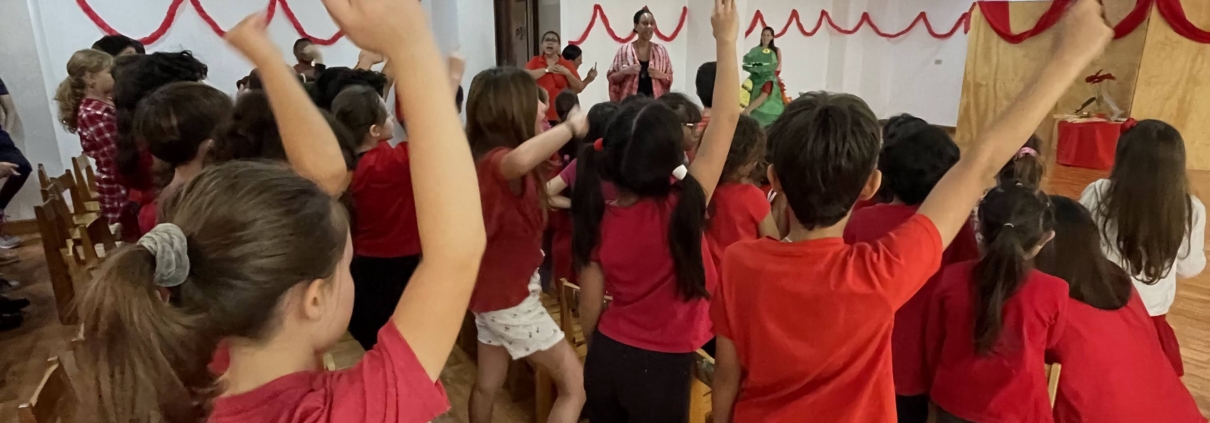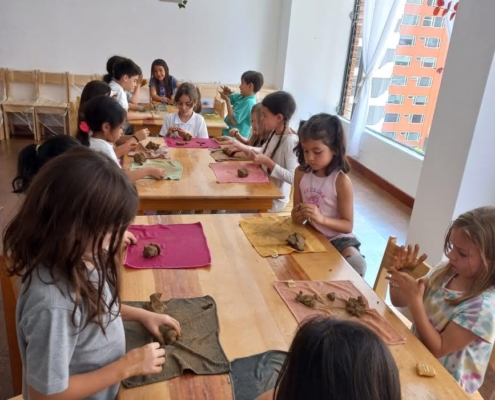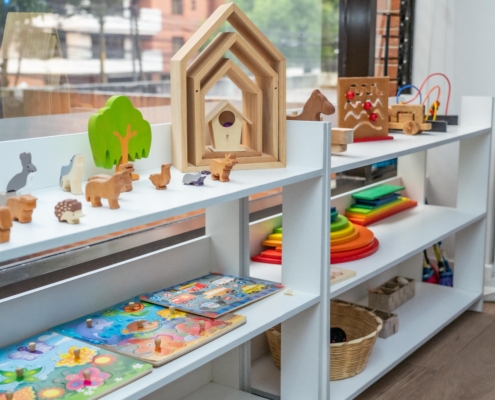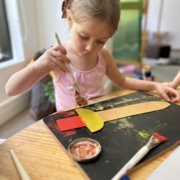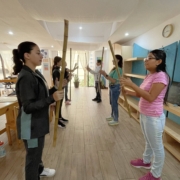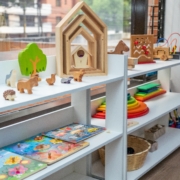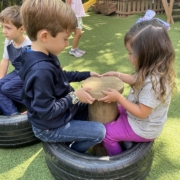Does Music Make You Smarter?
By Amanda Jones, Trinus Educator
The long-contended phrase goes “Music makes you smarter.” Is this true to some degree? Is it true at all? It’s more easy to believe this about some types of music more than other types of music. This is evidenced by the popularity of playing certain classical music for children before they are even born. The image of headphones on a pregnant mother’s stomach comes to mind. Does music really make you smarter? What does research say?
In a live Facebook event, we went deeper into these questions. You can watch the 30-minute talk below or read about the topic.
So, does music make you smarter? What do we mean by that? While some studies have reported that you can achieve a higher test score while listening to Mozart, more current research says that “believing listening to music raises test scores and IQ is an oversimplification of what music does for your brain” (Musacchia & Khalil, 2020).
Music has been shown to do several things for your brain. Music, especially actively participating in and making music:
- Increases your neuroplasticity,
- Creates more active neurological pathways,
- Interweaves sensory input,
- Makes a stronger bridge between the right and left hemispheres of your brain (Musacchia & Khalil, 2020).
Let’s break each of those things down a little with examples.
Neuroplasticity is your brain’s ability to change, adapt, learn, and grow. The more neuroplasticity your brain has, that’s like saying the better it is at “going with the flow”. Your brain has more resources and tools to use for the things you experience, both in everyday events and traumatic events. Benefits of neuroplasticity include, “enhanced memory abilities, a wide range of enhanced cognitive abilities, and more effective learning (Ackerman, 2020).” For those who experience a stroke or other traumatic brain injury, having greater neuroplasticity means your brain is able to compensate and reroute functions away from the damaged part of the brain. You’re able to relearn abilities lost in the damaged part of the brain. According to Harvard Medical School, patients with speech problems are “capable of singing words that they cannot speak (Harvard Health Letter, 2007).” I’d say that’s pretty amazing!
Because music uses so many parts of your brain simultaneously, you’re training multiple parts of your brain to work together in an organized and sensible way. It’s like doing a full-body workout versus focusing on one part of your body. If I’m someone who is a couch potato, certainly doing some hammer curls and push-ups every day will help. But, it’s like all the cardio exercise videos that are really serious; not only do they have you lifting weights with your arms, but you’re also in a plank position or balancing on one foot, or moving your legs at the same time. Sometimes you wonder if the video is really trying to help you or give you a heart attack with how hard you’re working. With music, you’re hearing things, having to pay attention to timing, and rhythm, creating the right words and pitch, and also using your sense of touch and sense of where you exist in the world all at the same time. It’s a major brain workout, making all the parts of your brain work together for multi-faceted sensory input with more neurons firing simultaneously. Music is never a passive activity.
In a very real and literal sense, it has been found that every part of the brain is bigger and more developed in those who participate in creating music (Musacchia & Khalil, 2020). Studies done on children who actively participate in music have found that even by the age of 7 the corpus callosum, also known as the “information superhighway” connecting the right and left side of the brain was 25% larger than the average child who did not participate in music (Miller, 2008).
What are the benefits of a larger corpus callosum? In certain instances, we like thinking of ourselves as either right-brained or left-brained. That if we’re artistic and completely disorganized and terrible at spelling and math, well, “we’re just right-brained.” It’s a nice spin on it. “That’s just the way I’m wired.” Right? If we’re always correcting others’ grammar, a bookworm, and have trouble drawing stick figures well, “I’m just left-brained. I just am not artsy.” Really, because music connects the right and left hemispheres of the brain, it means we can use both sides of our brain equally well.
A personal experience from my life: In about 6th grade every student at our school was given an aptitude test. This was supposed to help us plan which elective courses we could take in high school before we graduated. I had chosen band as my first elective in 6th grade and was greatly enjoying it and made many friends in the band. We all were eager to take our test and get some guidance because there seemed to be a lot of choices for which classes to take. Did I want to take more physical education classes, and some computer technology classes with programming? Maybe some hands-on classes with wood or metalworking? Should I focus on reading more, more art classes, animal or plant sciences, and languages? The aptitude tests were supposed to measure what you’d be most successful at, and along those lines, they gave you a printout with a little graphic, showing you if you were more right-brained than left-brained, and by how much.
If you received your aptitude test and it said you were very dominantly right-brained they might not have suggested you do some of the elective courses to learn what accountants do, for instance. That doesn’t mean you couldn’t do that, but it’d probably be much harder for you. Well, so we all took the test, and in a few weeks got our print-outs back that would tell us which side of our brains were used more and it also was supposed to suggest three classes we’d be good at, with a sentence or two about why. Of course, we’re teenagers, so the first thing we all want to do is compare ourselves to everyone else and then probably just take whatever classes it said our friends were good at because we just wanted to be with our friends anyway.
Well, we all brought our tests out at the end of band class, and we were all so terribly disappointed. All of us looked at the image of the brain, with the line going down the middle, and for all of us, the “dot” that marked which part of our brains we used most, fell exactly on the middle line of our brain. For suggested classes, all of our tests simply said something like, “No clear aptitudes emerged from this test. You should choose classes from your own interests. You have no clear strengths or weaknesses.” What a downer of a test. We all felt like it was saying, “You’re boring and completely normal and there’s nothing special about you.” But really, when you look at that, that we all had the ability to use both sides of our brain equally, it was a bit like a golden ticket. It was essentially saying, you’re going to be pretty successful at anything you try. You don’t have anything holding you back that’s going to make anything inherently difficult for you.
So, how can we have music work for us in education, outside of band and orchestra classes? At Trinus educators establish structured learning spaces and routines that become safe environments for students to learn and grow. These routines include music in several ways. Students are immersed in a language-rich English setting full of stories, and narratives offering a more advanced approach to language acquisition and ownership.
At Trinus, educators are constantly singing. Each day begins with a series of songs and movements that are age-appropriate and directly relate to what we’re learning in class. Music sets the tone of the classroom and creates an inviting atmosphere. Singing helps children really arrive and creates that sense of a safe environment. This looks different depending on the age of the child, but singing very effectively and immediately creates a feeling of reverence, excitement, awe, quiet, focus, or energy in the classroom.
Singing music and movement as a class is a regular part of the routine for each class at Trinus. Singing as a class greatly improves and builds memory. This is easily evidenced by thinking back on your own schooling and things you know because of songs. I can still repeat mathematical equations in songs from 8th grade. I don’t even know what the equation is and haven’t used it since 8th grade, but I still know the song.
Singing and movement as a class also builds social and emotional awareness and expressiveness. You learn things like blending your voice with others, and being aware of and listening to others while simultaneously speaking yourself. You have to share space and coordinate the song and movement with those around you. This is not an easy thing to do, even for professional musicians.
When you sing and move together in the classroom you are also working on impulse control, or the ability to stop and start together, on a cue. This is very important to develop, especially in young children, and a very good way to do it that is less abrasive than telling the toddler, “It’s time to pick up your toys now.” But, you’re working the same skills and the same parts of the brain when a child stops singing with their class as when you tell them it’s time to pick up your toys, and they listen and do so. Studies have also shown that students who play music together are more likely to interact positively with those they play music with (Musacchia & Khalil, 2020). The class that plays music together stays together!
Singing has also been shown to improve our ability to hear (Musacchia & Khalil, 2020). The more finely tuned ears are then better able to pick up the nuances of speech better. Better hearing leads not only to better speech but also better reading. Students who engage in music have been shown to be better, more advanced readers and have better reading comprehension (Musacchia & Khalil, 2020). The benefits to reading and speech with musical participation have been shown to be true both in a person’s native language, as well as a foreign language. When you participate in music activities you don’t just get better at reading or speaking one language, you get better at all languages (Hausen, Torppa, Salmela, Vainio, & Särkämö, 2013).
By combining singing and movement in the classroom you activate the whole brain and have a whole physical, emotional, social, cognitive, and interactive experience. At Trinus students connect and live what they learn in order to gain meaning. Experiencing learning through movement and music is a key way to do this. Music is much more than a way to entertain. Neuroscience has shown that music activates many parts of the brain simultaneously. When we engage in music in the classroom we’re helping our brains grow in ways that will benefit us and our students for the rest of their lives.

